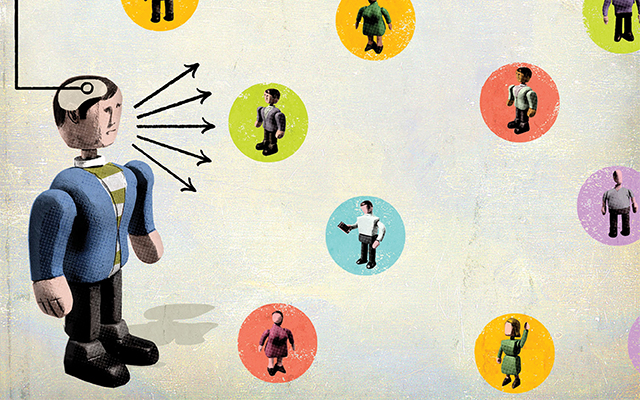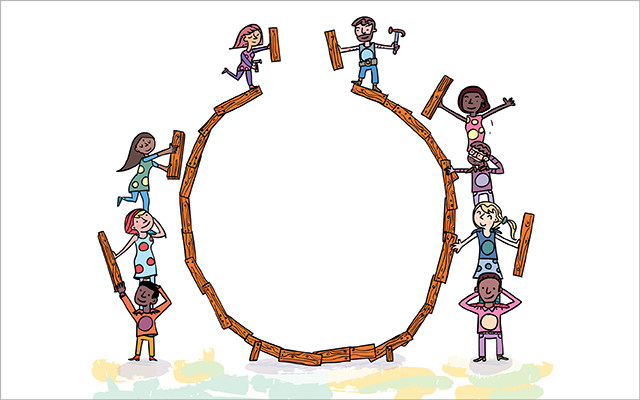There’s a grisly riddle to consider: A father and his son are in a car accident. The father dies at the scene and the son, badly injured, is rushed to the hospital. In the operating room, the surgeon looks at the boy and says, “I can’t operate on this boy. He is my son.”
Pause until you’ve figured it out.
The solution, which appears in Blindspot: Hidden Biases of Good People, is this: The surgeon is the boy’s mother.
For a great many of us (including this writer, who is both female and a great believer in professional equality), that answer is embarrassingly hard to figure out. We often unconsciously associate men with professional roles more strongly than we do women — and this is why I, at least, was left stumped. And, when I learned the answer, chagrined.
Mahzarin Banaji, PhD, and Anthony Greenwald, PhD, the authors of Blindspot, have given the source of my unwelcome confusion a name: “mindbug.”
The brain contains an unconscious warehouse full of associations between certain people and particular characteristics that often cause us to misidentify our fellow humans. (In this case, the faulty automatic link is between “surgeon” and “male.”) Banaji and Greenwald see these cues as “ingrained habits of thought that lead to errors in how we perceive, remember, reason, and make decisions.”
Such mindbugs come in many forms. We create associations constantly, usually in response to media images and cultural narratives. The resulting links (like male = professional, elderly = feeble, plump = unfit) affect our perception of people based on race, gender, age, weight, and sexual orientation.
That we have mindbugs does not indicate a flaw in our characters — it’s simply a part of living in a human culture with a human brain, most of which operates unconsciously. “Whether we want them to or not,” write Banaji and Greenwald, “the attitudes of the culture at large infiltrate us.”
“Whether we want them to or not, the attitudes of the culture at large infiltrate us.”
Hidden associations can cause us to act out of sync with our conscious values, however. They produce blind spots that make it difficult to envision people in roles different from those we’ve automatically assigned them.
Mindbugs don’t necessarily produce hostile behavior, but they can affect choices more subtly, like whether to help someone with a flat tire on the side of the freeway. Or offer someone a job. Or pursue a career in a particular field ourselves.
Though mindbugs are tenacious and operate beyond conscious reach, Banaji and Greenwald believe we can modify our response to them. “Although our focus has been on the power of the unconscious mind,” they write, “we do not mean to suggest that such thoughts cannot be overruled.”
The first step is to make biases conscious. To achieve this, Banaji and Greenwald created the Implicit Associations Test (IAT), which gauges participants’ reactions to photos and words during timed exercises.
It can be unsettling to learn from the test that you harbor an unconscious preference for white people, or thin people, or young people, or that you unwittingly hold a negative belief about a group you are a member of (self-directed mindbugs are distressingly common).
But, again, our biases aren’t always something we create willfully. And being aware of them can afford us greater control over our choices.
While Banaji and Greenwald are cautious to note that unconscious biases can’t be eliminated (you’d have to get rid of the unconscious mind altogether), they believe there are effective ways to work around them, including the following:
Exposure to Positive Images
Banaji keeps a rotating slideshow of diverse images of counterstereotypes on her screensaver that include a short, bald senior executive and a construction worker in a hardhat breastfeeding her baby. She downloaded the photos after being impressed by a study that found exposure to positive images could modify negative associations.
The study had participants view 10 pictures of esteemed African Americans followed by 10 pictures of infamously dangerous white Americans. This significantly weakened test-takers’ original preference for images featuring white subjects.
The trick, say Banaji and Greenwald, is to make the exposure ongoing. The effects fade, so include positive, counterstereotypic images in your life wherever and whenever you can.
Positive Role Models
Studies at the University of Virginia found that a high percentage of those who take the gender-career IAT are biased to associate men with math and science. Still, researchers found this mindbug was weakened when students took math courses from female faculty: The more courses they took, the weaker the association.
This proves the importance of good mentors and role models for children, whose impressions of the world are just being formed. But it’s important for adults, too. If you think you’re too _______ to write a book, become a trapeze artist, or study chemical engineering, find a role model who bucks your stereotypes and get started.
No Categories
Banaji and Greenwald stress that the best way to defeat mindbugs is to work around them. And one way to do that is to set up situations where profiling becomes unnecessary.
They cite a friend who was denied a medical test because she didn’t fit the risk profile. After insisting on an examination, she discovered she was vulnerable to the condition. Eventually, the test was administered to all patients over a certain age, thus eliminating the need for selection based on a person’s individual characteristics.
While it’s not feasible in every context, it’s best to strive to facilitate processes that can eliminate biases. This could mean fighting for equal parental leave at your company (so one population is not singled out as leave-takers) or opening the local soccer league to boys and girls.
And when all else fails, slow down and question your assumptions. Sometimes the best way to defeat the negative effects of unconscious biases is simply to think twice.
About the Authors
Mahzarin Banaji, PhD, is the Richard Clarke Cabot Professor of Social Ethics in the psychology department at Harvard University.
Anthony Greenwald, PhD, is a professor of psychology at the University of Washington. Together they developed the Implicit Associations Test to detect unconscious social biases. Find the test at www.implicit.harvard.edu.




This Post Has 0 Comments